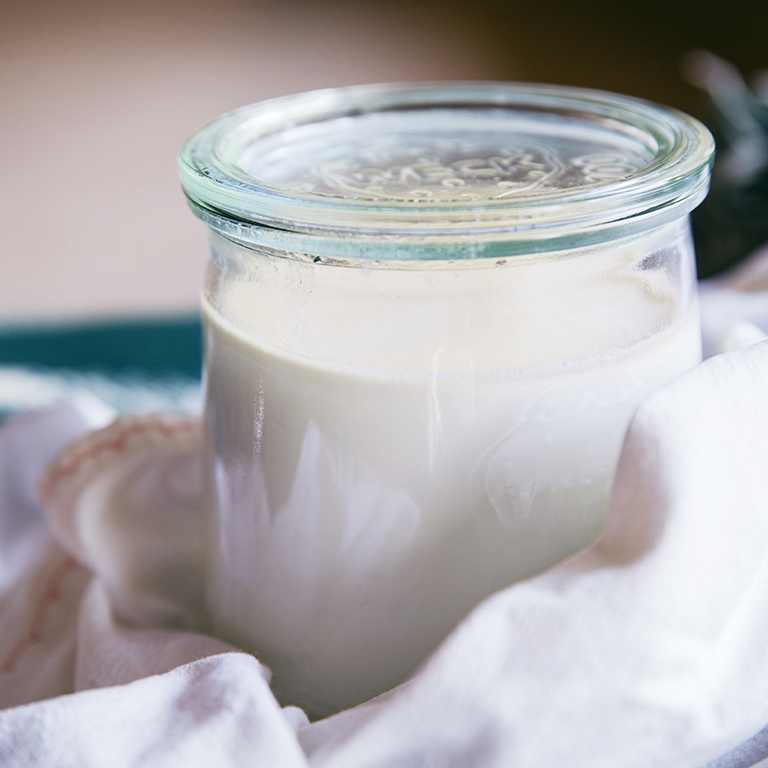Thick and Creamy Yogurt

Photo: Thomas J. Story
To create a satiny yogurt, Fletcher uses whole milk, adds dry milk to boost the protein, and heats it before culturing.
How to Make It
Pour hot tap water into a clean wide-mouth 1-qt. canning jar and set aside.
Whisk together whole milk and dry milk in a medium saucepan. Heat over medium heat, whisking often, until milk reaches 195° on an instant-read thermometer. Adjust heat to keep milk at 195° and cook, whisking often, 10 minutes. After heating, “you’re going to have a thicker, more stable curd,” Fletcher explains. Remove from heat.
Set pan in a sink of ice and water and cool to 115°. “The milk cools fast, so keep checking it. If it goes too low, just reheat it.” (But don’t let it go above 118°, or it will kill the yogurt.)
Put yogurt in a small bowl and whisk in about 1 cup hot milk to temper it and thin it out, then whisk this back into milk in pan. Transfer milk to a container with a spout. Drain hot water from jar and add hot milk mixture. Put lid on jar.
Incubate yogurt. “I wrap it in a kitchen towel so it doesn’t get my blankets dirty, then set the jar in a blanket nest.” Fold a small blanket or beach towel in quarters, set on a counter, and fold sides up over yogurt. Snugly tuck 2 more folded blankets around the outside. Let yogurt sit undisturbed in a draft-free place 5 hours.
Unwrap and tilt jar gently to check if yogurt is set. “It should be like a baked custard.” If not, rewrap and check in another 1 to 2 hours (it may take up to 12 hours total). The longer it cultures, the tarter it will taste. You may also get liquid–the whey–forming around the curd. “I like it mellow, so I try to stop it as soon as it’s set.”
Chill completely (1 1/2 hours) before serving for yogurt to firm up; otherwise, it will be too fragile.
The culturing process takes 5 to 12 hours–and the following ingredients and tools.
MILK Any fat level works, but Fletcher prefers whole milk for the way its creaminess balances yogurt’s tang. Open just before using.
NONFAT DRY MILK Adding a little creates thicker, more stable yogurt.
“STARTER YOGURT” This will convert milk sugar (lactose) to lactic acid. Use plain yogurt (ideally whole-milk) with “live cultures” on the ingredient list; open just before using. You can save some of your own yogurt to culture the next batch if you make it at least once a week.
THERMOMETER Fletcher likes the instant-read Super-Fast Thermapen ($96; thermoworks.com); or use a clip-on candy thermometer.
JAR Use a clean wide-mouth quart or liter canning jar for culturing.
A WARMER Have blankets or an electric warmer, such as Brod & Taylor Folding Proofer ($148; brodandtaylor.com), on hand to keep yogurt warm while it cultures.
Make ahead: Keeps 1 week, chilled.
Makes 1 qt. (serving size: 1 cup)

